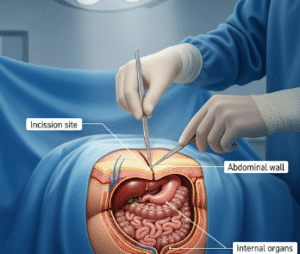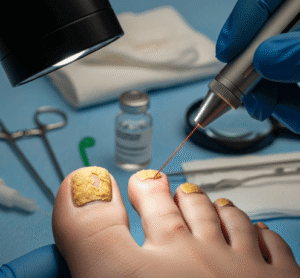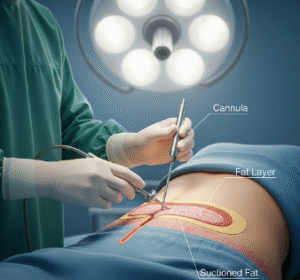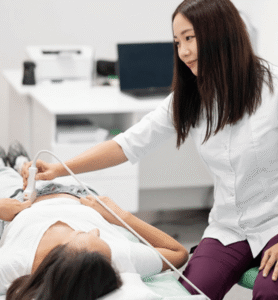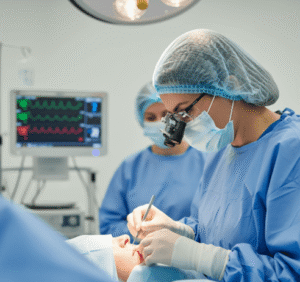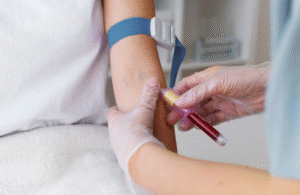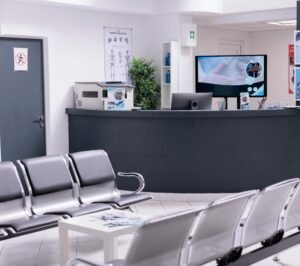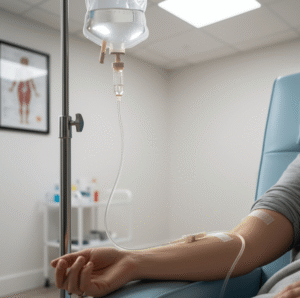What It Is
Eyelid reconstruction after Mohs surgery is a procedure to restore the structure, function, and appearance of the eyelid following the removal of skin cancer (such as basal cell carcinoma, squamous cell carcinoma, or sebaceous carcinoma). Mohs surgery ensures complete cancer removal but may leave defects in the delicate eyelid tissues, which can affect both vision and aesthetics.
In Korea, eyelid reconstruction is performed by plastic surgeons and oculoplastic specialists using advanced techniques such as local flaps, skin grafts, cartilage grafting, and microsurgery to restore natural eyelid contour, mobility, and protection of the eye.
Why It’s Done
Patients undergo eyelid reconstruction after Mohs surgery because:
- Eyelid defects can compromise eye protection and vision.
- Cosmetic concerns arise due to visible scars or asymmetry.
- Proper closure is essential to prevent dry eye, irritation, or corneal damage.
- They want to restore normal blinking and natural eyelid appearance.
Good candidates include:
- Patients who have undergone Mohs surgery with partial or full eyelid defects.
- Individuals in good general health.
- Those seeking both functional and cosmetic restoration.
Alternatives
- Secondary intention healing: Small superficial defects may heal on their own but often leave scars or functional issues.
- Skin grafts alone: Useful for certain defects but may not restore eyelid mobility or natural contour.
- No reconstruction: Rarely an option, as untreated eyelid defects can cause serious eye problems.
Preparation
Before eyelid reconstruction in Korea, patients will:
- Undergo evaluation by an oculoplastic surgeon.
- Have eye examinations to assess corneal health and eyelid function.
- Stop smoking and alcohol 2–4 weeks before surgery.
- Avoid blood-thinning medications and supplements.
How It’s Done
- Anesthesia: Local anesthesia with sedation or general anesthesia depending on the defect size.
- Reconstruction techniques depend on the extent:
- Primary closure: Direct suturing for very small defects.
- Local flaps (advancement, rotation, or transposition): For moderate eyelid defects, using adjacent eyelid or facial skin.
- Skin grafts: Taken from the upper eyelid, behind the ear, or supraclavicular area for surface coverage.
- Cartilage or mucosal grafts: To restore eyelid support and lining.
- Complex flap reconstruction (Hughes flap, Mustardé flap): For large or full-thickness defects.
- Duration: 1–4 hours depending on complexity.
Recovery
- First week: Swelling, bruising, and mild discomfort are common; antibiotic ointments are applied.
- Return to activities: Most patients resume light activities in 5–7 days.
- Final results: Functional and aesthetic improvements become clear within 1–2 months as swelling resolves.
Possible Complications
- Asymmetry between eyelids.
- Scarring or visible suture lines.
- Temporary or permanent eyelid malposition (ectropion or entropion).
- Infection or delayed healing.
- Rare risks: vision changes or corneal damage.
Treatment Options in Korea
Diagnosis
Korean surgeons use clinical examination, digital photography, and sometimes imaging to assess the extent of eyelid defects and plan reconstruction.
Medical Treatments
- Lubricating eye drops and ointments to protect the eye until surgery.
- Scar treatments for minor post-surgical irregularities.
Surgical or Advanced Therapies
- Primary closure for small defects.
- Local flap techniques for moderate defects with good tissue availability.
- Skin grafting for surface replacement.
- Composite flap reconstructions for full-thickness or extensive eyelid defects.
- Microsurgical free flaps in rare, complex cases.
Rehabilitation and Support
- Regular postoperative eye care and lubrication.
- Scar management with silicone gels or fractional laser.
- Follow-up visits to ensure proper eyelid function and eye health.
- International patients benefit from Korea’s specialized oculoplastic surgeons, advanced reconstructive planning, and aesthetic precision.


